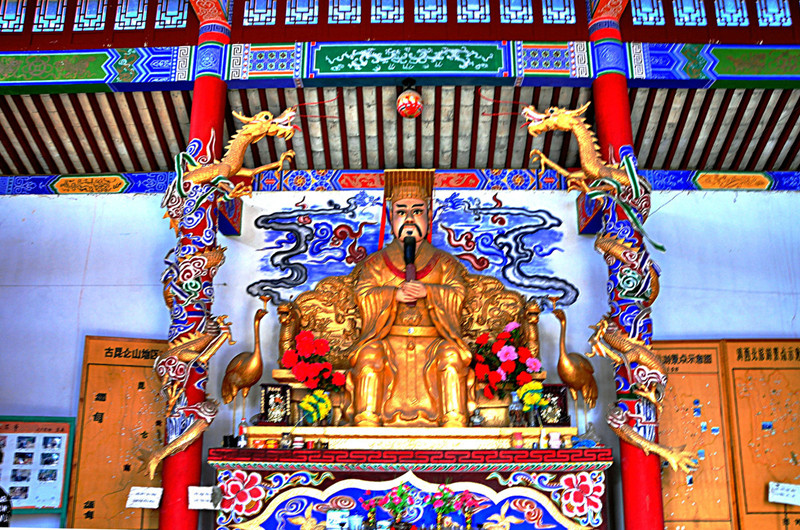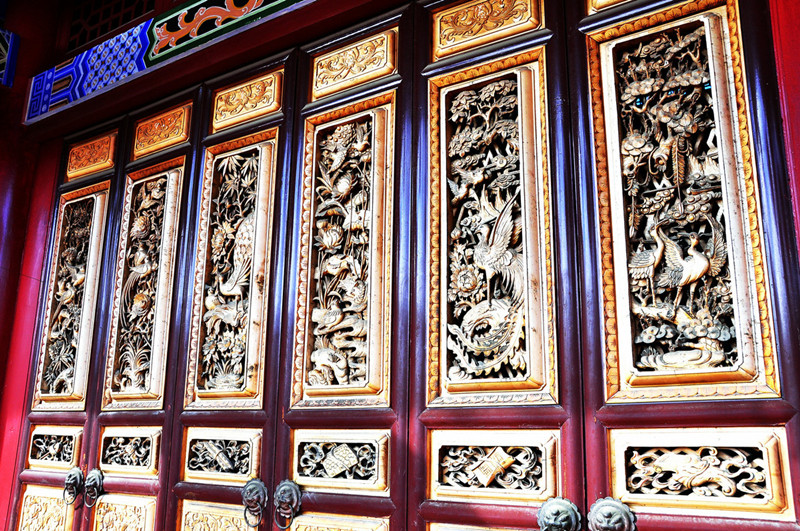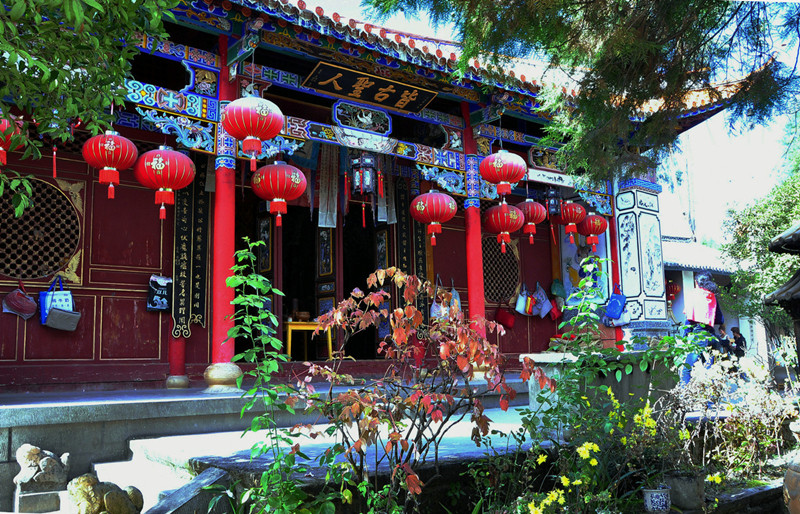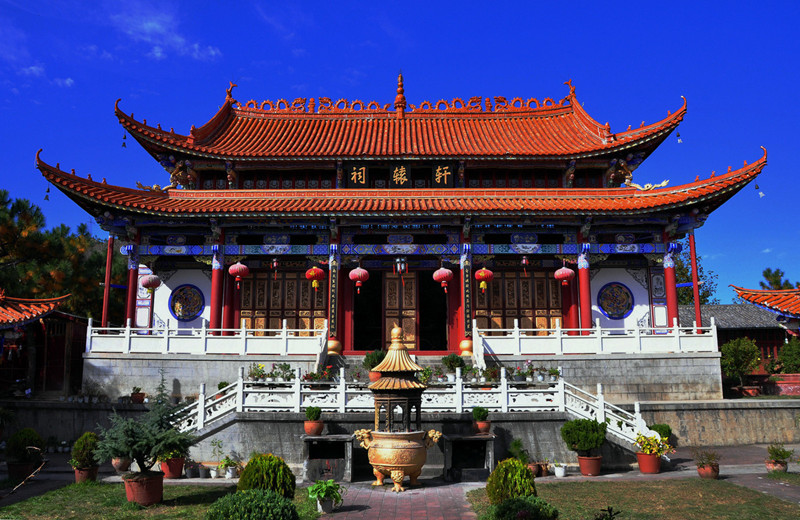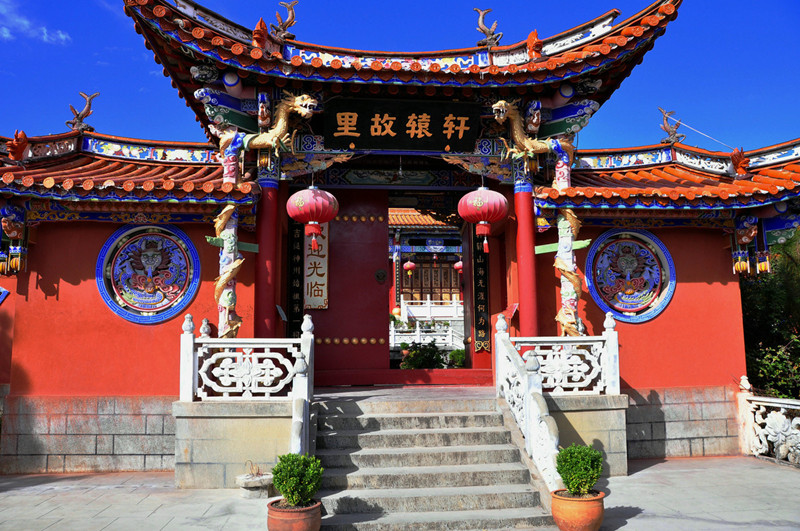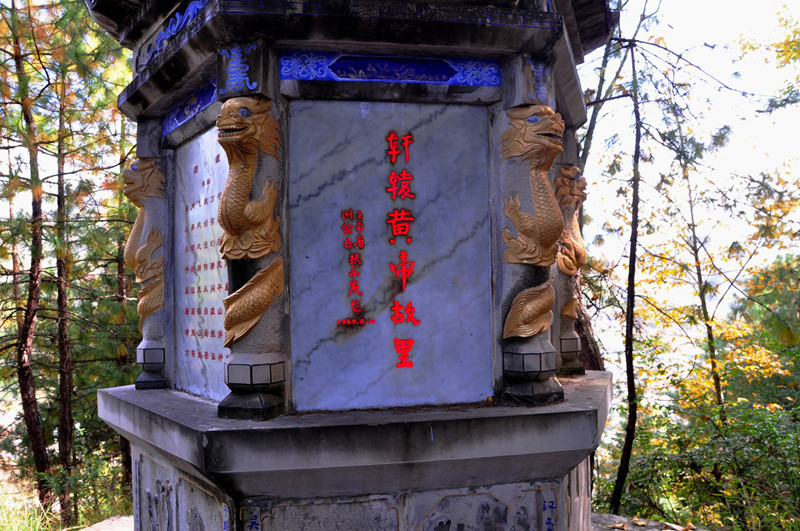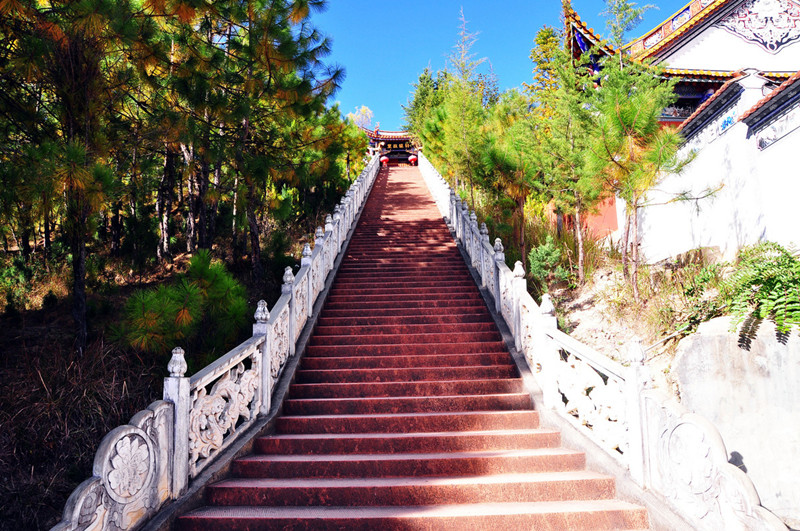Xuanyuan Ancestral Temple in Lanping County, Nujiang
Overview
Xuanyuan Ancestral Temple (轩辕祠) is located at the foot of Erwu Mountain (二五山) in Jinding Town (金顶镇), Lanping County (兰坪县), Nujiang Lisu Autonomous Prefecture (怒江傈僳族自治州). It serves as the main structure of Xuanyuan Park (轩辕公园). The temple was established in 2002, covering an area of approximately 1,500 square meters, and was funded by the local elderly association of Wenxing Community (文兴社).
Experts have noted that the geographical features of Erwu Mountain closely resemble descriptions in the ancient text “Shanhaijing” (《山海经》). This area is marked by “perpetually snow-capped mountains” and places with unique geological phenomena, such as “no shadow in daylight” and “objects catching fire upon landing.” The landscape in Lanping County runs predominantly north-south, supporting the local legends that attribute the area as a birthplace of Chinese civilization. The names like Guantian (官田), Huangdi Kuo (黄帝口), and Xuanyuan Bridge (轩辕桥) have been associated with ancient heritage, reinforcing the belief that this is the original homeland of the Chinese people. This discovery has gained significant media attention both domestically and internationally, leading to a press conference held by the Yunnan Provincial Propaganda Department in June 1994 to promote the findings.
Historical Significance
According to the “Shanhaijing,” Jinding Town is situated at the site of the ancient Xuanyuan Kingdom (轩辕国). Geographer Fu Yongfa (扶永发) conducted extensive research in the area, culminating in a scholarly work titled “Discovery of Shenzhou: Geographical Research of Shanhaijing” (《神州的发现〈山海经〉地理考》). To promote this ancient cultural heritage and support tourism development, the local elderly association raised over 1.5 million yuan, with backing from county and town officials, to build the Xuanyuan Ancestral Temple complex at the foot of Erwu Mountain.
The architectural design of the temple complex is both rational and unique, featuring the grand Xuanyuan Temple, a pilgrimage path, and stunning natural scenery, making it a significant cultural landmark in Jinding.
Address
No. 3-1 Jinjing Road (金江路), Lanping Baizu and Pumi Autonomous County (兰坪白族普米族自治县), Nujiang Lisu Autonomous Prefecture (怒江傈僳族自治州).
Discovery of Xuanyuan’s Hometown
At the end of the 20th century, engineer Fu Yongfa from the Yunnan Provincial Surveying and Mapping Bureau made a groundbreaking discovery after studying the “Shanhaijing.” He identified that the birthplace of the Yellow Emperor (轩辕黄帝) is located in the Erwu Mountain area of Lanping County. This revelation positioned Lanping as a new cultural landmark in Chinese history, emphasizing its role as the true hometown of the Yellow Emperor.
In the early 1990s, a sensational report claimed that Jinding, Lanping, was the birthplace of the Yellow Emperor, sparking widespread attention and intrigue. The Yellow Emperor, a central figure in Chinese mythology, is revered as a founder of numerous ancient civilizations, yet his birthplace has been debated, with various claims across China. The identification of Lanping as his origin raised questions and prompted further exploration into this narrative.
The Significance of Erwu Mountain
The discovery dates back to the late 1980s when Fu Yongfa wrote “Xuanyuan Yellow Emperor Hometown” in red paint on a wooden board at a local site known as San Sheng Guan (三圣官), marking it as a sacred place for the Chinese people. This board has since become a pilgrimage site for visitors.
Fu utilized his expertise in aerial surveying, cartography, and toponymy in his extensive research of the “Shanhaijing,” concluding that the geographical conditions described align with the characteristics of the Hengduan Mountains (横断山脉) in western Yunnan. His findings led to the understanding that the birthplace of the Yellow Emperor is indeed in this region.
Cultural Heritage
The term “Xuanyuan” refers to various landmarks in Lanping, such as Huangdi Kuo (黄帝口) and Xuanyuan Bridge (轩辕桥). The interpretation of Erwu Mountain symbolizes the union of auspicious elements in Chinese cosmology, supporting the narrative of this site as a cradle for significant historical figures. Archaeological findings suggest that human ancestors thrived in this region as early as the late Paleolithic and Neolithic eras.
Conclusion
Fu Yongfa’s book, published in 1992, has since revised and reprinted multiple times, showcasing a new perspective on the “Shanhaijing” and asserting that western Yunnan is a cradle of Chinese civilization. The findings in Lanping affirm the area’s significance in Chinese history and culture.
How to Get There
Traveling to Lanping County can be accomplished via several methods. The nearest airport is in Lijiang (丽江), from which you can take a bus or rent a car to Lanping County. The journey takes about two hours. Additionally, high-speed trains operate between Kunming (昆明) and Lijiang, providing further access to the region.
Travel Tips
- Best Time to Visit: The ideal time to visit is during spring and autumn when the weather is mild and pleasant.
- Local Culture: Engage with local customs and traditions, especially around Xuanyuan Ancestral Temple, to deepen your understanding of the cultural significance.
- Respect the Site: As a place of historical and cultural importance, maintain decorum and respect while visiting the temple.
- Plan Ahead: Since this area is less commercialized, it’s advisable to plan your accommodations and transport in advance to ensure a smooth trip.
